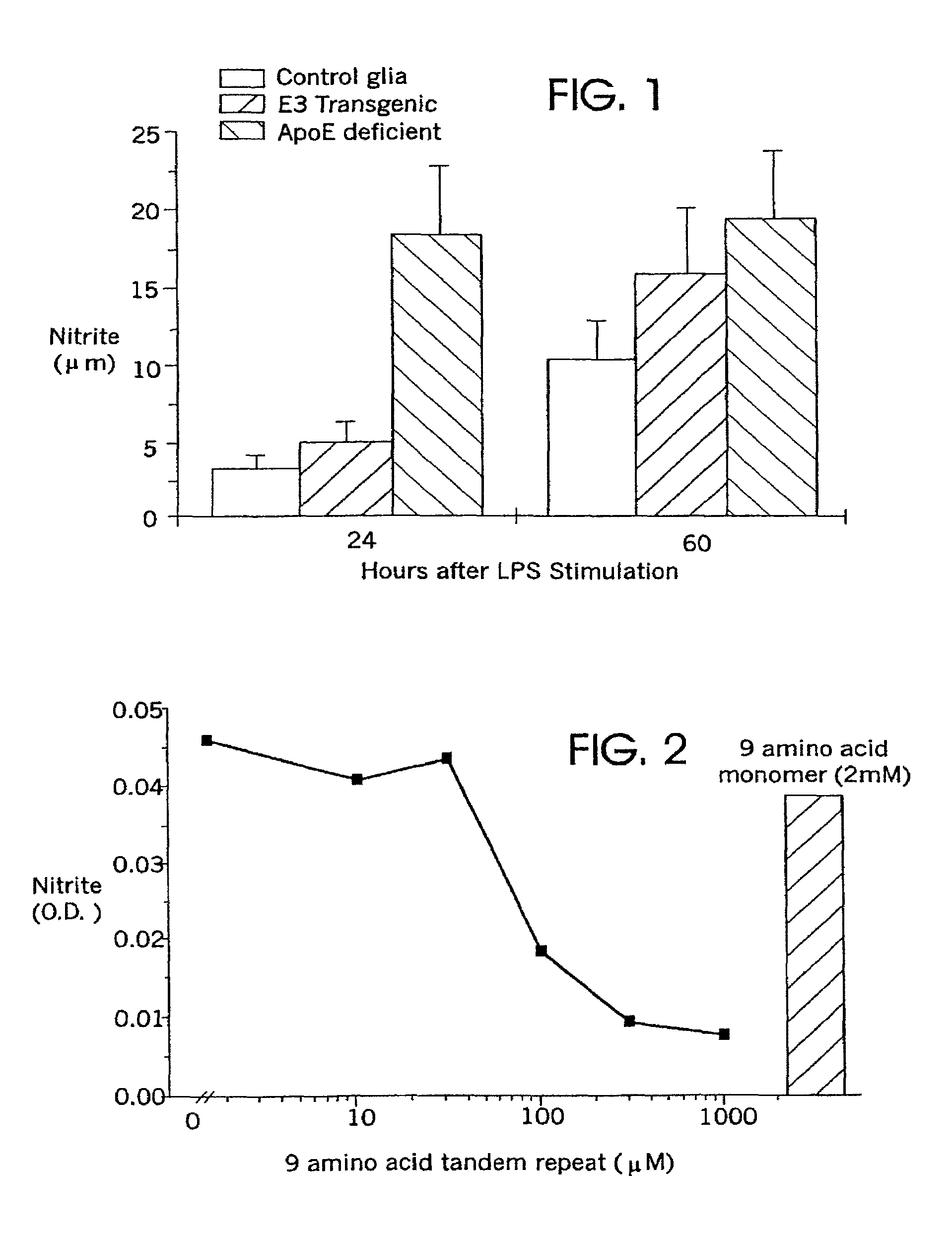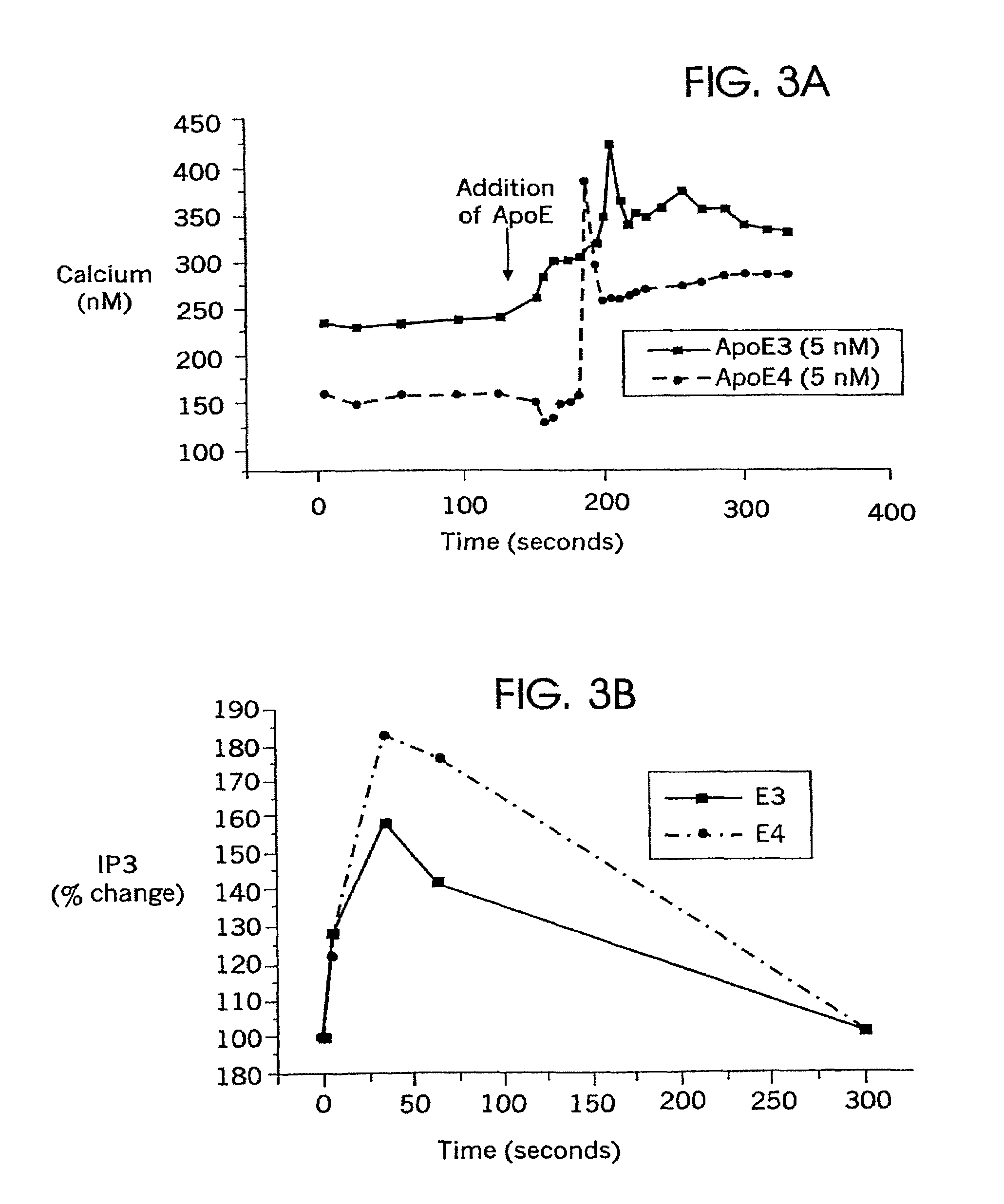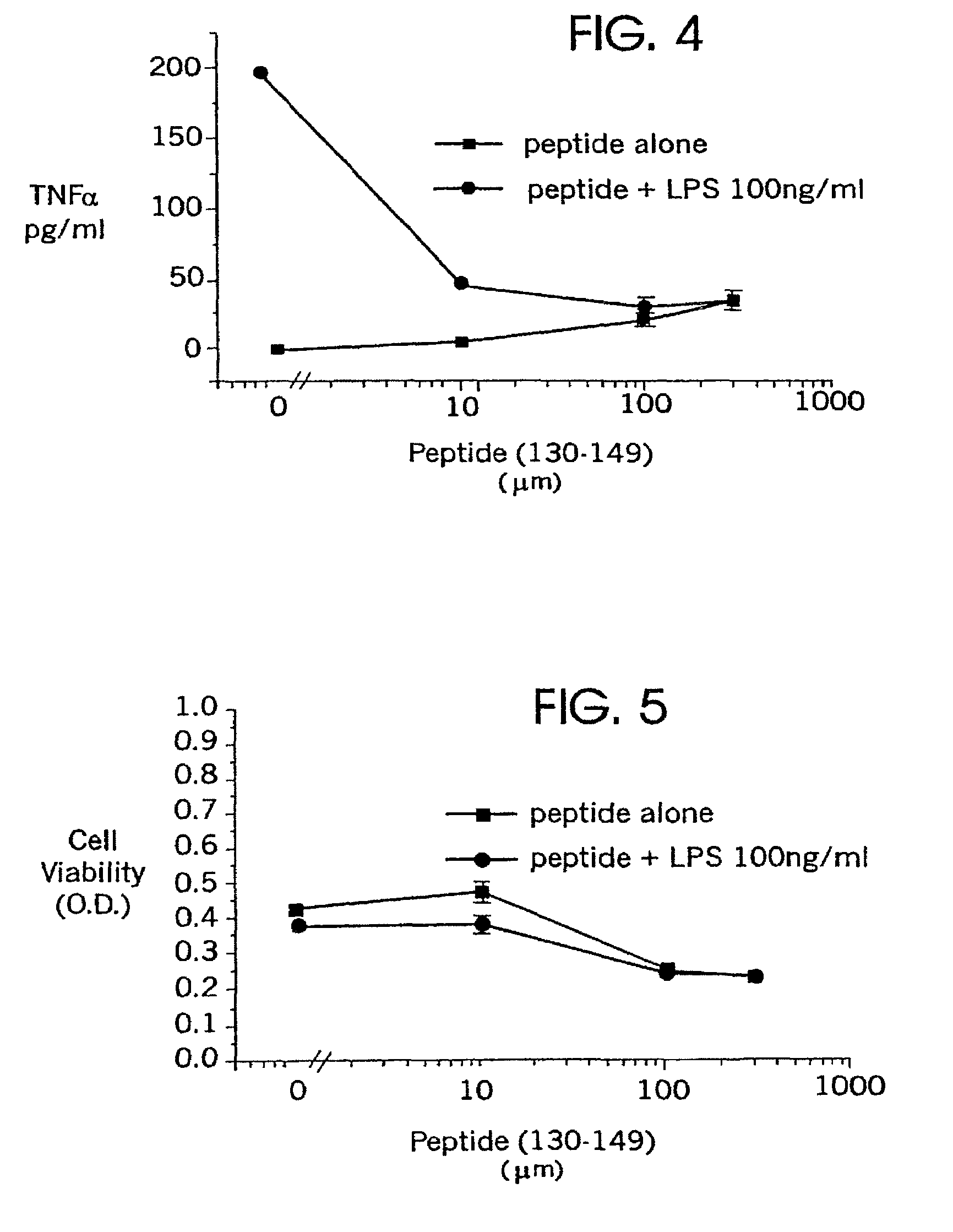Methods of suppressing microglial activation and systemic inflammatory responses
a microglial activation and systemic inflammatory response technology, applied in the field of methods of suppressing microglial activation and systemic inflammatory responses, can solve the problems of apoe's role in glial activation and cns injury, which is not readily cross the blood-brain barrier, and the link between apoe and tau remains controversial, so as to block the function of lrp, affect and modify macrophage function, and increase intracellular calcium
- Summary
- Abstract
- Description
- Claims
- Application Information
AI Technical Summary
Benefits of technology
Problems solved by technology
Method used
Image
Examples
example 1
Microglial Nitric Oxide Production
Materials and Methods
[0121]This study examined the role of endogenous apoE in modulating microglial nitric oxide (NO) production, as measured by nitrite accumulation following lipopolysaccharide (LPS) stimulation of microglia.
[0122]Culture preparation and characterization: Mixed glial cell cultures were prepared from: (a) wildtype (C57B16; Jackson Laboratories) mouse pups; (b) ApoE deficient mutant mouse pups (ApoE-deficient mice), and (c) transgenic mouse pups expressing human ApoE3 but not murine ApoE (ApoE3 mice). See Xu et al., Neurobiol. Dis. 3:229 (1996) regarding the creation and characterization of the transgenic mice. Mixed glial cell cultures were prepared as has been described. See McMillian et al., Neurochem. 58:1308 (1992); Laskowitz et al., J. Neuroimmunol. 76:70 (1997). Briefly, brains were removed from 2-4 day old pups, cleaned of membranes and blood vessels, mechanically dispersed in Ca+2-free media, and collected by centrifugation....
example 2
Microglial Nitric Oxide Production
Results
[0128]Culture Characterization: No significant differences were found in glial populations among the cultures prepared from ApoE-deficient, ApoE3, and wild-type mice. Cultures comprised approximately 70% astrocytes, 15% microglia and 15% neurons. Comparisons of cellular preparations from wildtype mice, ApoE-deficient mice and ApoE3 mice showed no differences in glial populations. In particular, levels of microglia (the primary effector cells for NO production) were comparable in all three culture preparations, as detected by lectin binding (data not shown).
[0129]ApoE-deficient mouse cultures showed robust nitrite responses during the first 24 hours of exposure to LPS. This enhanced response was 6-fold greater than that observed with microglia from control animals (p=0.0001; FIG. 1). Cultures from transgenic mice in which murine apoE is replaced with human ApoE3 show weak responses to LPS that were not significantly different than responses of...
example 3
Suppression of Microglial Activation by Peptides of SEQ ID NO:3
[0131]Enriched microglia primary cultures were prepared from the brains of apoE deficient mouse pups as described in Example 1, above. The microglia were stimulated with lipopolysaccharide (100 ng / ml) to activate the microglia as described in Example 1. Activated microglia secrete inflammatory cytokines and nitric oxide; the secretion of nitric oxide was used in the present experiment as a marker of microglial activation. Nitric oxide production was assessed as described in Example 1.
[0132]Peptides of SEQ ID NO:3 were added to cultures of activated microglia, in dosages of from 0 μM to 1000 μM. A dose-dependent decrease in nitric oxide secretion was observed after 48 hours (FIG. 2). The administration of a peptide of SEQ ID NO:2 in a dose of 2 mM did not result in any apparent decrease in nitric oxide secretion (FIG. 2). The monomer peptide of SEQ ID NO:2 acted as a control to establish that the observed results are not ...
PUM
| Property | Measurement | Unit |
|---|---|---|
| pressure | aaaaa | aaaaa |
| pH | aaaaa | aaaaa |
| temperature | aaaaa | aaaaa |
Abstract
Description
Claims
Application Information
 Login to View More
Login to View More - R&D
- Intellectual Property
- Life Sciences
- Materials
- Tech Scout
- Unparalleled Data Quality
- Higher Quality Content
- 60% Fewer Hallucinations
Browse by: Latest US Patents, China's latest patents, Technical Efficacy Thesaurus, Application Domain, Technology Topic, Popular Technical Reports.
© 2025 PatSnap. All rights reserved.Legal|Privacy policy|Modern Slavery Act Transparency Statement|Sitemap|About US| Contact US: help@patsnap.com



